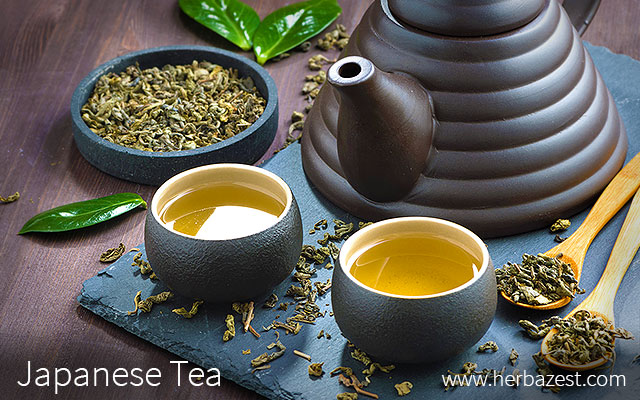Japanese tea culture is one of the most beautiful and well-known characteristics of Japan. Tea accompanies people in all stages of their life, uniting families at the weddings, consoling them at the funerals, and breaking boundaries between strangers. The tea leaves produced is Japan are sold around the world in scarce amounts, which adds to their uniqueness and explains the usually high price of Japanese tea varieties.
Drinking Japanese tea is a great way to dive into Japan's rich history and its cultural complexity.
About Japanese Tea
The tea plant (Camellia sinensis) is believed to have arrived in Japan from China in the 9th century thanks to a Buddhist monk, Eichu, but its consumption was initially limited to the highest hierarchies. Throughout the years, efforts have been put into popularizing tea for its health benefits and making it available to all Japanese social classes.
The tea plant has adapted well in Japan, and the country is now the second largest producer of green tea after China. In fact, it is the only type of tea currently produced in this country, and it is so popular that the word "tea" is understood by most Japanese as green tea.
Japanese teas typically have a slightly sweeter flavor than other green teas, which results from steaming the leaves, instead of pan firing them. Most of the tea processing, even harvesting, is mechanized in Japan, and the final rolling and drying gives the leaves their characteristic needle-like shape and rich green color.
Japanese Tea Varieties
There are several Japanese teas, but most varieties are produced from the 'Yabukita' cultivar, and they notably include:
Sencha is the most popular green tea variety, accounting for 80% of all Japanese tea.
Bancha is similar to sencha, but of a lower grade.
Gyokuro is one of the most exclusive varieties of Japanese tea.
Genmaicha consists of toasted sencha leaves and rice puffs, and it is also known as roasted green tea.
Kukicha is a mix of the leaves and stems of sencha.
Hojicha is made with roasted sencha leaves with twigs of kukicha.
Shincha is a highly awarded
Matcha is a fine green tea powder called an elixir of the immortals due to its medicinal properties.
Japanese Tea Ceremony
Japanese tea ceremony, called chanoyu, is known around the world for its elegance and symbolism. Its creation is believed to have been inspired by Buddhist rituals, practiced in the monasteries in the 12th century, but Murata Juko is considered the founder of the Japanese tea ceremony, and who turned it into a spiritual practice few centuries later.
A great deal of attention is put on turning a preparation of matcha tea into a beautifully orchestrated spectacle, which also includes an art of flower arrangements, called kado, and incense appreciation, called kodo. Occasionally, sencha leaves are used instead of matcha.
Japanese tea ceremonies can be formal, called chaji, which includes a full-course meal with sweets and thick tea, or informal, called chakai, which consists of a thin tea and sweets. It is the time to be in the moment and forget about earthly matters. Individual rituals and procedures, well as their sequence and the selection of handcrafted teaware for an actual ceremony vary between different schools of Japanese tea ceremony.
Where to Buy Japanese Tea
Although Japan is a big tea producer, it does not export its green tea in large quantities to the other parts of the world. A little less than 2% of all Japanese tea can be found on the market shelves, and those varieties who get to be exported are typically of the highest quality, and priced accordingly. They are usually sold at the gourmet tea shops or several online stores.
Sources
- An Introduction to Japanese Tea Ritual
- Five College Consortium, Japanese Tea Ceremony
- Japanese Tea Culture: Art, History, and Practice
- LaGrange College, Zen and the Art of Tea




